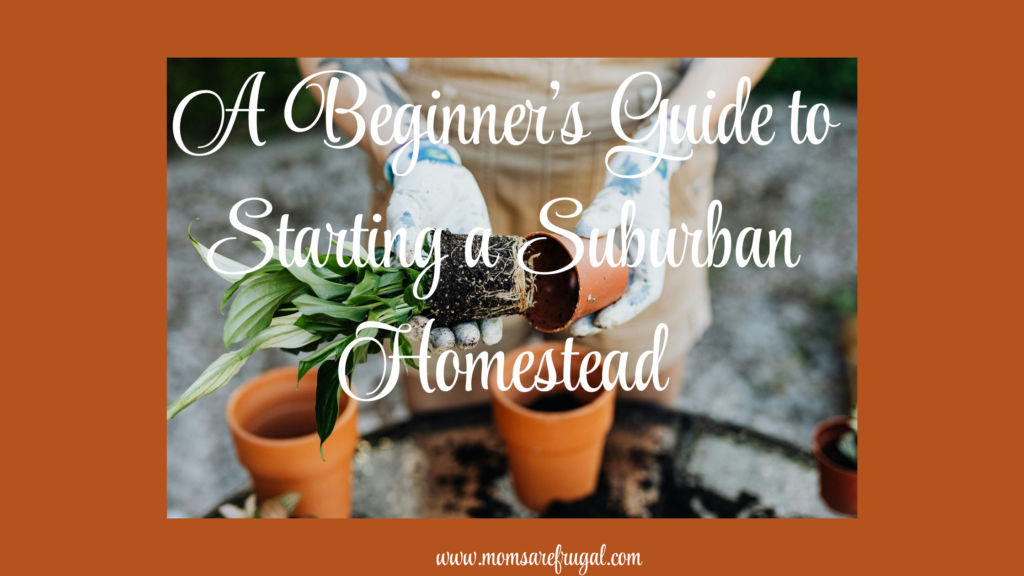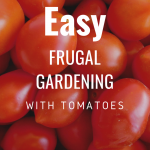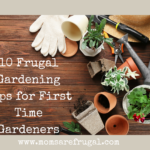***There are affiliate links in this post that will give me a small commission but not a price increase for you.
About four year’s ago I began our suburban homestead. I didn’t have a beginner’s guide to anything. All I had was the knowledge or gardening and desire to produce our own food, even though we do not live in the country. Initially, I have been semi-homesteading for many years’, as we have always had a garden. My garden has grown along with my children. Now, our space is bigger and my knowledge is more vast to grow multiple crops.
Starting a suburban homestead is fulfilling, and doing all of the things is not important. What is important is to look into local laws to see what is allowable in your area. HOA neighborhoods are more strict with their policies, and some cities may not allow for chickens. First step in the beginner’s guide to homesteading is to do your research on the local laws.
Begin Your Suburban Homestead
Next, size up the amount of space you have and determine what you will do with the space. If you have a smaller space use it well. The front yard and the back yard are usable. Whoever came up with the idea that our front yards were to be grassy wasn’t trying to grow their own food and herbs. Of course always keep your neighbor’s in mind because when you have them close to you their properties surround yours’. don’t be the neighbor that brings down property values. Keep everything neat and clean, that way it will minimize complaints.
In addition to that, livestock animals such as goats, sheep, horses, chickens, rabbits, ducks, and guineas should not be in the front. I keep all of our animals in the backyard. This way it helps to eliminate predator’s, but my front yard is full of flowers, herbs, raspberry bushes, fruit trees and more. This way they produce food for us, and beauty for the neighborhood. If as a beginner suburban homesteader you decide to have a beehive, place it in a location that doesn’t cause distress to the neighbors.

A Beginner’s Guide to Mapping your Space
Mapping your growing space, animal space, or quiet space is the step after you realize your “why” to this lifestyle. Figuring out what goes where, how it will grow in that space, and where the sunlight will land is important. Not just for animals, but for gardening and flowers as well. In the event you want to sell some of your produce or flowers it will be a priority to have thriving plants.
Choosing a shady spot for a garden is a disaster, just as choosing a sunny spot for flowers that need shade will not work. When you have the determination to go forward to try your suburban home into a homestead determining these factors will make or break a garden, animal locations, and/or flower beds. To begin with watch for a couple of weeks what time of day on your property gets the most sun. Do you need a privacy fence? What will you grow, or raise. After these answers are found it is time to move on to the next step.
Adding Animals to a Suburban Homestead
One of the first animals that we purchased was a dog. Dogs are good companions, they are faithful protectors, and they guard your animals. We now have three dogs. All three dogs are of the same working group and are herd animals. I did my research to see what dogs go well together and work together to protect the home. Two are rescued because they deserve a chance at a good home, and one is a pure bred German Shepherd.
The next animals added to our homestead were chickens. They provide eggs, are easy to feed, and easy to take care of on a daily basis. We have had chickens for 12 years’ now. They give us plenty of eggs. We don’t keep more than eight at any given time because that number gives us the eggs we want. Feeding animals is expensive right now, so we do look for good food options at affordable prices. Our chickens eat a lot of scraps, so that helps.
The next animals that we added were ducks. We keep ducks to sell the eggs. Not many people in our area keep ducks, so that gives us an opportunity to make some money towards the feed.
After ducks we added rabbits. At the moment we do not sell or breed our rabbits, because they are pets. Essentially when we purchased them they were for 4-h. Now they are cute bunnies that bring us joy. We do not intend to eat them, but at some point we might breed them a few times. One of our bunnies has floppy ears and we would like to breed her. She has such a fun personality and is so pretty.
Our final set of animals that we keep on our homestead is the goats. We also purchased them for 4h. Our goats make better pets than our dogs sometimes. We have two and that is all we are allowed to keep. They are small Nigerian dwarf goats and their upkeep is fairly easy. All of these animals require food, so that has to be added into our budget. I did that prior to purchasing to make sure we could keep all of our animals. They deserve to have a committed home and not be sold around.
Build a Seasonal Rhythm
Set up routines that coordinate with what you want to grow and do on your suburban homestead. Our reason for homesteading is to create a source of sustainability in the city limits. We want healthy food for our kids and the ability to have animals that create a work atmosphere. Our children help us to clean pens, weed the garden, feed and water the animals, and harvest the food in the summer. Allowing them to grow up with responsibilities keeps them off screens and in nature.
We aslo homeschool so our lifestyle allows for them to view science in life. They see the seasonal rhythms that we have set up on our homestead. Our homeschoolers take part in planting annuals in the spring, spreading mulch in the falls, picking out the apple trees, pear trees, and other bushes that provide us with food. During canning season we set it up as a class. This year they studied microbiology through canning. So many opportunities arise from this lifestyle, and that is why we love it.
For more tips on how start a frugal suburban homestead sign up for my newsletter! or follow me on Instagram @momsarefrugal.








Leave a Reply